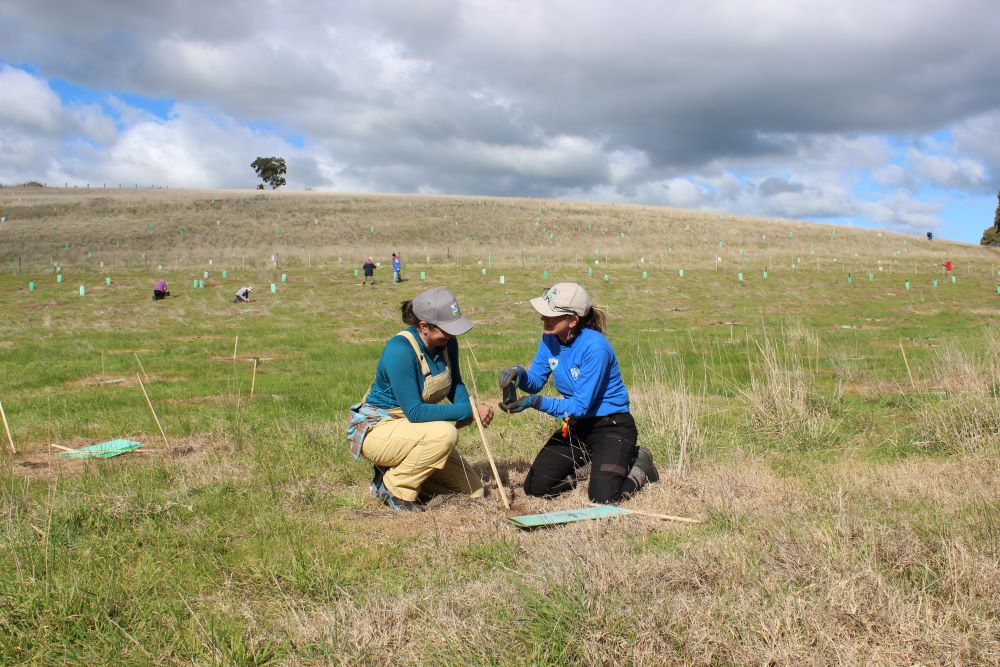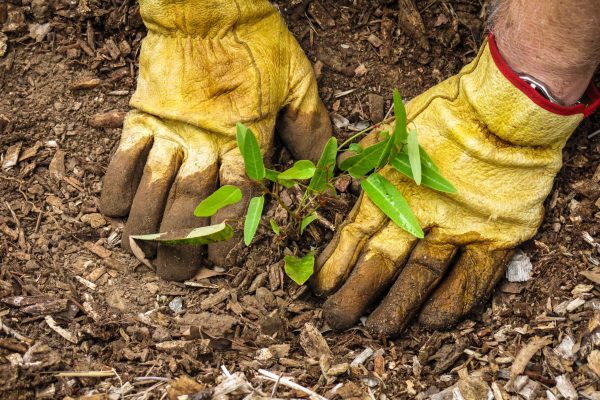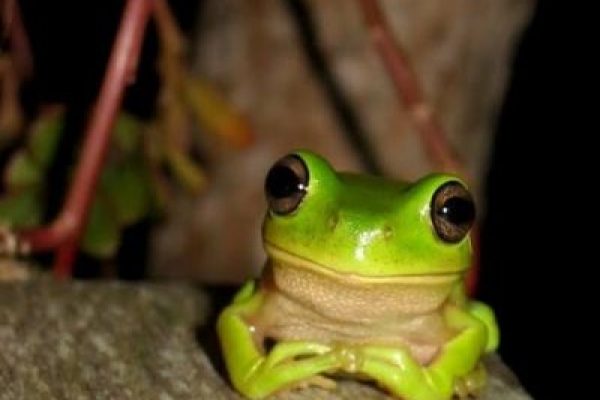October 25, 2022
|
G.J. Gardner Geelong hits a milestone.
TREES PLANTED
1,350
Long term partners of Fifteen Trees, G.J. Gardner Homes Geelong, with the assistance of Bellarine Catchment Network, and Grade 5 students from Our Lady Star of the Sea Primary School, carried out the incredible task of planting 1,350 trees in one day in May 2022.
Rohan Smith and Paul Delgallo from G.J. Gardner Homes Geelong are generous supporters of local community groups, and their tree planting projects. This year Rohan, Paul and their team purchased 1,350 native trees (and tree guards) for the Bellarine Peninsula. Bringing their total tally of an astonishing 10,000+ trees planted since 2013.

G.J. Gardner prides itself on being a practical, hands-on family affair, and in past years, staff have happily gone out with their local community to plant their trees themselves. Local Landcare groups determine the best tree species for the site. The seedlings themselves are grown by local independent nurseries who have collected seed from the region by hand (with the proper licensing, of course). The sites that have been planted in the past have included nature reserves, parklands, roadsides, school grounds, riverbanks & rural properties.
G.J. Gardner’s core business is building homes. Safe, secure places for families to grow and thrive for many years to come. We love that alongside this, G.J. Gardner Homes is planting forests, which is very much the same thing; safe, secure places for fauna and flora to grow and thrive for many years to come.

A young member of the crew helps out on the day.
As part of their 12th annual school environment day with the Bellarine Catchment Network, the students enjoyed learning about the environmental and social value of Bonnyvale wetlands and the threats that it faces including litter, pollution, invasive weeds and biodiversity loss. They participated in 3 activities; revegetation and tree guarding, ‘Biodiversity Bingo’ including birdwatching using binoculars and a scope, and the Corangamite Catchment Management Authorities’ ‘Story of a River’ activity looking into pollutants.

This event was supported by Fifteen Trees, G.J. Gardner Homes Geelong and the City of Greater Geelong and made possible by the Victorian Government’s Distinctive Areas and Landscapes Capital Grants Program.
Writer; Lou Ridsdale.
Lou is a big fan of words and has been our Comms Manager since 2019.
She is a big-minded green thumb, Earth Lover, big-hearted nature freak plus a savvy media and horticulture expert, who passionately believe that everyone can lead a more nourishing and sustainable life. Her passion for education + communication being the most empowering tool for change is reflected in her setting up her own business Hey Hoe Let’s Grow. She also founded Food Is Free Inc. a unique grassroots food security platform specialising in food security education. She fell in love with trees after reading The Magic Faraway Tree as a child.
You can find Lou here.
RECENT TREE PLANTINGS
1,200 TREES PLANTED
135 TREES PLANTED
1110 TREES PLANTED
SIGN UP FOR OUR MONTHLY UPDATES.
Restoring Australian ecosystems. Supporting communities with their revegetation projects for a greener and healthier planet.
Fifteen Trees acknowledges Indigenous Australians as the traditional custodians of the lands on which we work, live and play.
We recognise that Indigenous Australians have cared for and lived in harmony with this land for millennia, and their knowledge and wisdom of the land endures.
We pay our respects to Elders past, present and emerging and stand in solidarity as Indigenous Australians seek a fairer and more sustainable future for the land and its people.


